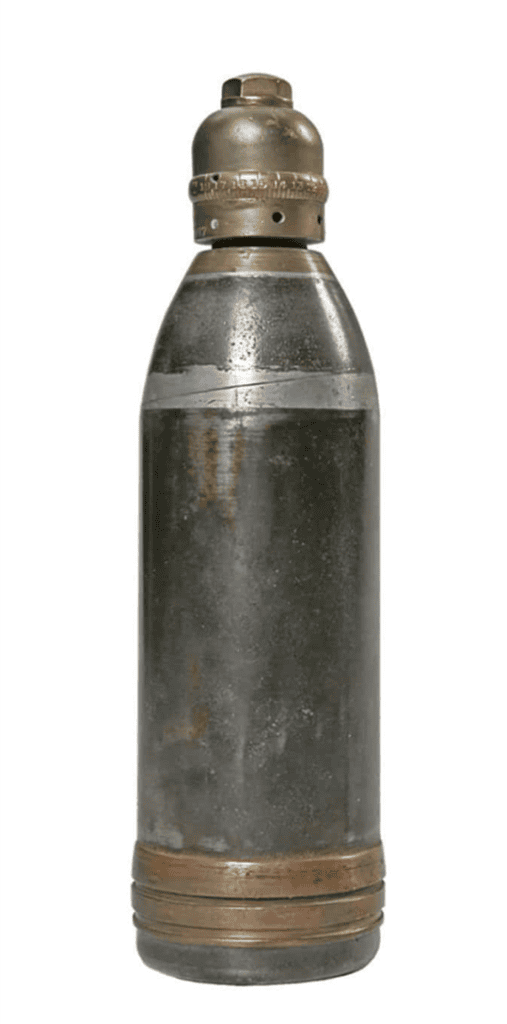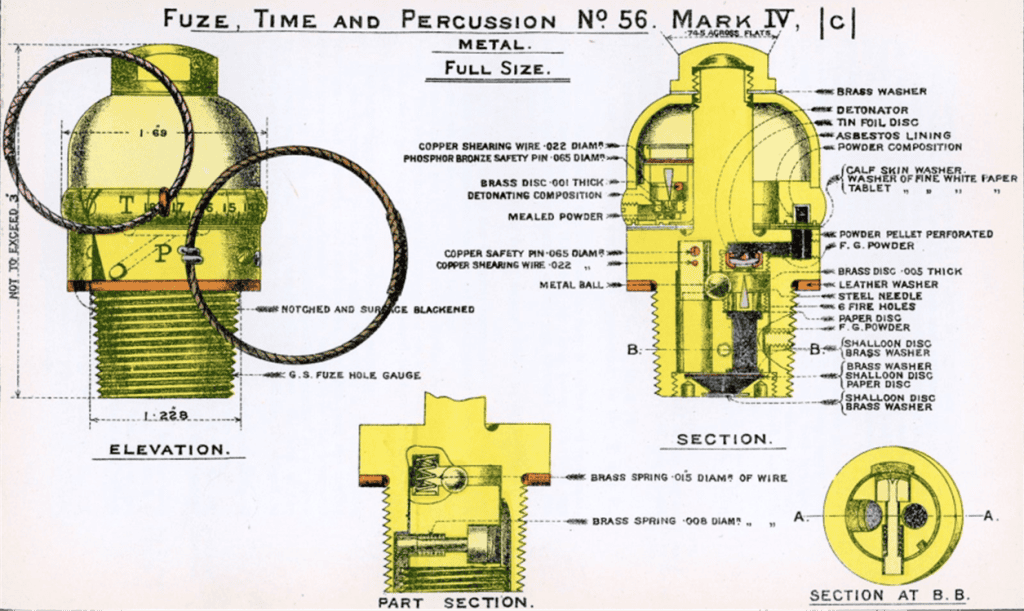The Highly Effective No. 56 Time & Percussion Fuse
The RCA Museum has six No. 56 mushroom-shaped time and percussion fuses in the Boer War exhibit circa 1895. Canadians effectively used the No. 56 fuse with shrapnel shells during the Boer War (1899-1902). The introduction of the No. 56 fuse was a significant technological advancement ahead of its time.
“The fuse is the soul [for] any system of explosive projectile.” Artillery Notes by Quartermaster Thomas Maxwell, RCA, 1895.
A fuse is the central mechanism responsible for igniting the bursting charge of a shell. The fuse conveys the message to the bursting charge to explode when it reaches the point at which it should explode. The fuse increases the lethality of the shell and maximizes its destructive potential.
The earliest fuses were rudimentary, slow-burning cords from the 14th century. Between 1829 and 1832, the British Artillery standardized time fuses. By 1850, they had 19 variations of time fuses, including 16 wooden models and three metal varieties. While the British Artillery had tested percussion fuses since the 17th century, they did not stock them for general use until 1846.
By the 1890s, Canada stocked four classes of fuses, including percussion, delayed action, time, and combination (T & P). Percussion ignites when it strikes an object. Delayed action hits an object and ignites after a certain period. Time fuses act after the expiration of an interval of time. T & P fuses ignite in the air after a specified time or on impact with a hard surface.
To the right: 12 Pounder HE Shell with No. 56 Time & Percussion Fuse.

During the Boer War, Canada deployed the 12 Pounder Breech Loader (BL) gun, replacing the 9 Pounder Rifled Muzzle Loader (RML). Improvements included an increased muzzle velocity of 1,700 feet per second, compared to 1,400, with an increase in range of about a mile, or 5,000 yards. The 12 Pounder BL included smokeless cordite cartridges with no thick cloud of smoke after firing. The gun also had a lightweight steel carriage for agile field mobility.
The shrapnel shell for the 9 Pounder RML had thick walls and a small payload of bullets that flew out the bottom of the shell backwards. It also used an inaccurate time fuse, undermining the effectiveness of the shell against enemy formations. The 12 Pounder BL shrapnel shell had thin walls and a large payload of bullets that burst from the top with limited loss of momentum, enabling the bullets to disperse in a predicted cone pattern.
The Canadian Artillery purchased the No. 56 fuse and regular percussion fuses in significant quantities for the Boer War. The Canadian Artillery used the No. 56 fuse with shrapnel and high explosive (HE) shells, which exploded in the skies over enemy soldiers or on land. T & P fuses enabled artillery units to adjust their firing capabilities, providing great flexibility when targeting enemy positions.

Illustration of No. 56, Mark IV, Time and Percussion Fuse, 1905.
The No. 56 fuse proved highly effective during the Boer War and highlighted the significant role that time & percussion fuses played in warfare. During WW1, the Allies utilized the same technology, including the No. 56 fuse, paired with shrapnel and HE shells in the tens of millions on the Western Front. It was a remarkable technological innovation ahead of its time.
By Andrew Oakden
